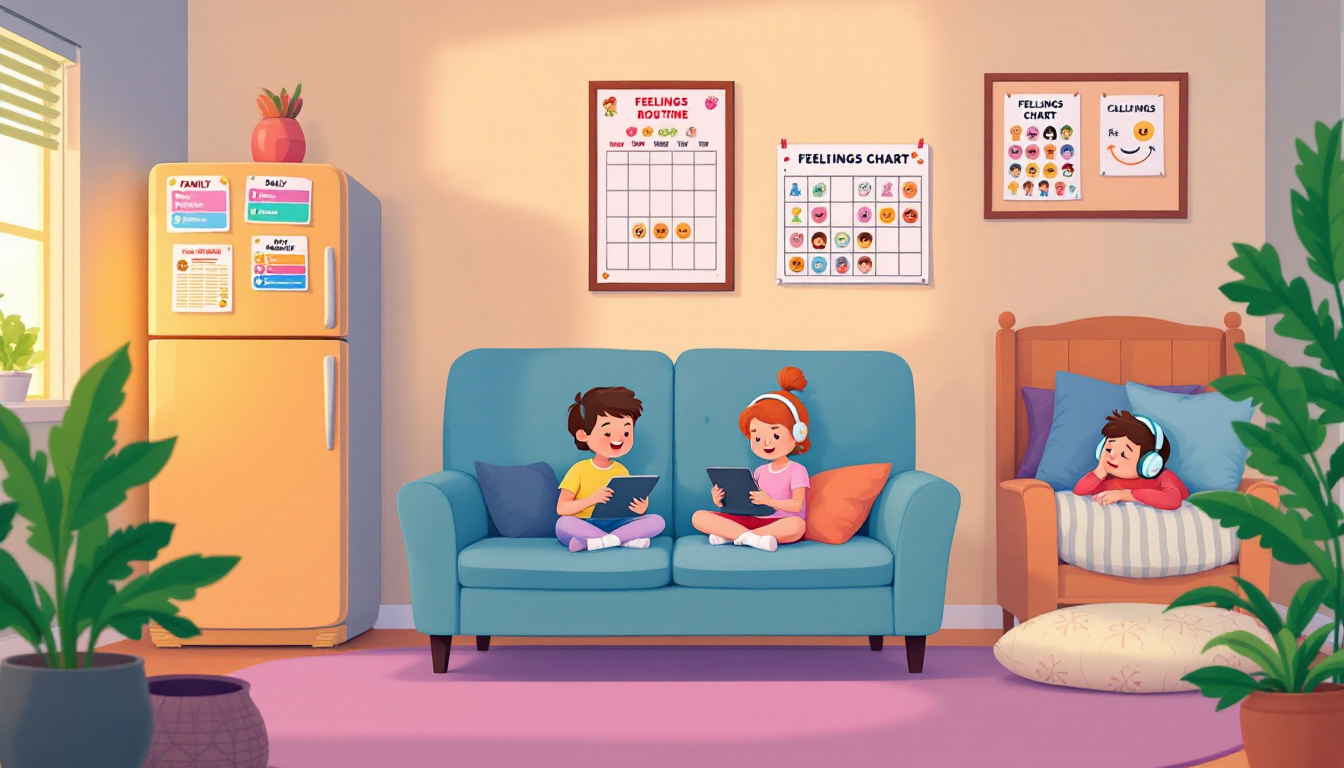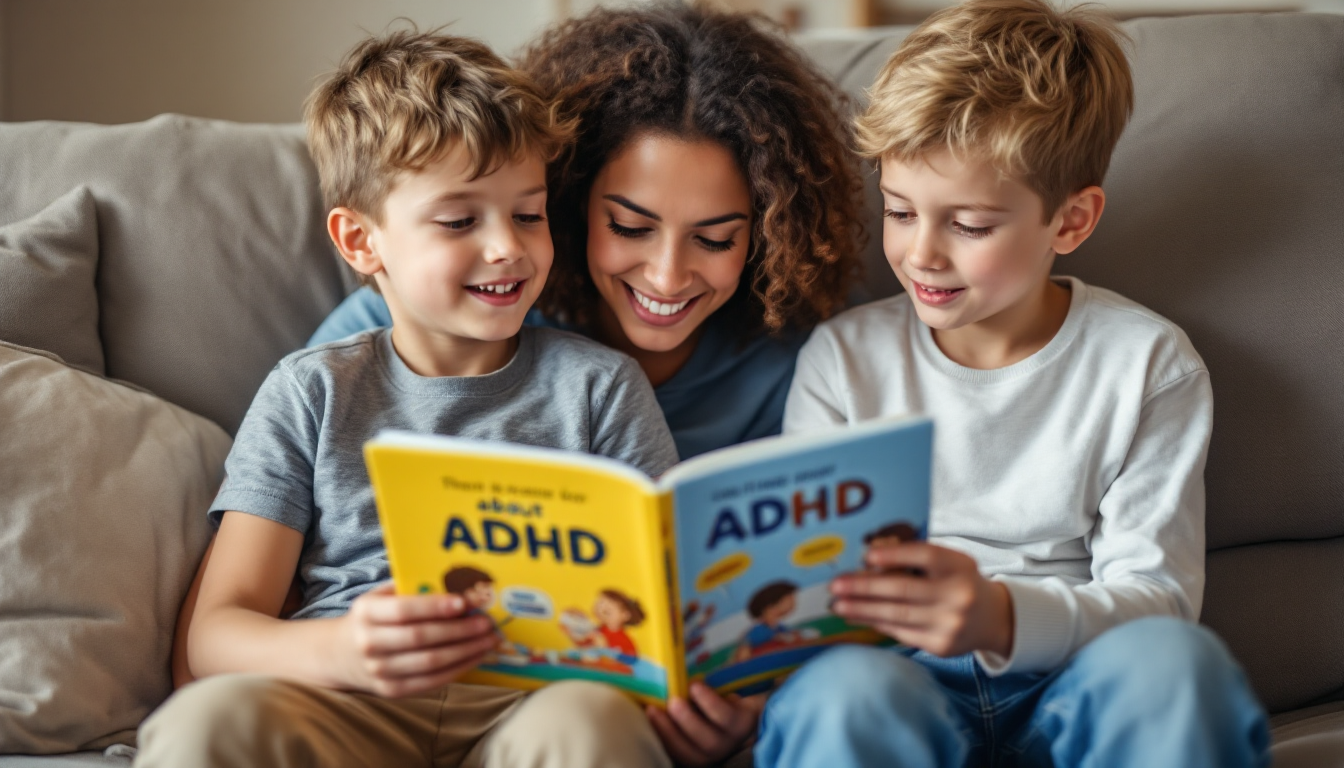ADHD and Sibling Rivalry: How to Keep the Peace at Home

Is your home a constant battleground? Do you find yourself refereeing endless arguments between your children, feeling like the tension is amplified by ADHD? You're not alone. The unique challenges of ADHD can often intensify typical sibling squabbles, turning minor disagreements into major meltdowns. This article will explore the complex connection between ADHD and sibling rivalry and provide you with actionable strategies to foster understanding, reduce conflict, and bring a sense of calm back to your family.
Why ADHD Intensifies Sibling Rivalry
While sibling rivalry is a normal part of family life, ADHD can pour fuel on the fire. The core symptoms of Attention-Deficit/Hyperactivity Disorder often create a dynamic where misunderstandings and frustrations can flourish. Understanding these underlying factors is the first step in parenting ADHD siblings more effectively.

Emotional Impulsivity
Children with ADHD often struggle with emotional regulation. They may react intensely to situations that other children might brush off. A minor annoyance can trigger a major outburst of anger or frustration, catching a sibling completely off guard and escalating the conflict. This isn't intentional misbehavior; it's a neurological challenge in managing emotions with ADHD.
Attention-Seeking Behavior
The very nature of ADHD means a child may require more of a parent's time, energy, and attention for things like homework, daily routines, and managing behavior. The neurotypical sibling can perceive this as favoritism, leading to feelings of resentment and jealousy. They may act out to get their own share of the attention, sparking a cycle of conflict.
Misunderstood Intentions
A child with ADHD might grab a toy impulsively, not out of malice, but because their brain shouts, "I want that now!" A neurotypical sibling, however, sees this as a deliberately mean act. This constant misinterpretation of motives can erode the sibling bond and build a wall of frustration between them.
Common Triggers for Sibling Fights in ADHD Households
Pinpointing the specific flashpoints in your home can help you proactively address them. Common triggers include:
-
Sharing and Personal Space: Impulsivity can make it difficult for a child with ADHD to respect personal boundaries or the rules of sharing.
-
Perceived Unfairness: The neurotypical sibling may feel the child with ADHD "gets away with more" or that the rules aren't applied equally.
-
Transitions and Routine Changes: Difficulty with transitions can make a child with ADHD irritable, increasing the likelihood of lashing out at a nearby sibling.
-
Sensory Overload: A noisy, chaotic environment can be overwhelming for a child with ADHD, lowering their tolerance for frustration and making fights more likely.
Strategies to Reduce Conflict and Build Connection

Knowing the "why" behind the conflict is essential, but you need practical tools to manage it. Implementing consistent strategies can dramatically lower the stress levels in your home and improve ADHD and family dynamics.
Set Clear and Consistent Family Rules
Create a short list of non-negotiable family rules. These should apply to everyone to foster a sense of fairness.
-
Use respectful language.
-
Keep your hands and feet to yourself.
-
Ask before borrowing.
-
We solve problems together.
Key Takeaway: Post these rules in a visible place, like the refrigerator, as a constant reminder for the whole family.
Use Visual Schedules and Routines
Children with ADHD thrive on structure. A visual schedule for daily routines (morning, after school, bedtime) helps everyone know what to expect, reducing transition-related meltdowns. This predictability benefits both the child with ADHD and their sibling.
Teach Emotional Labeling and Self-Regulation
Give your children the vocabulary to express their feelings. Instead of just "mad," introduce words like "frustrated," "annoyed," "disappointed," or "overwhelmed."
-
Create a "feelings chart" that they can point to.
-
Model this yourself: "I'm feeling frustrated because the milk spilled."
-
Work together on calming strategies for kids with ADHD and their siblings.
Praise Cooperative Behavior
Actively catch your children being good to each other. Even small moments of cooperation deserve praise.
-
"I love how you two decided to share the tablet."
-
"That was so kind of you to help your sister with her shoes."
Key Takeaway: Positive reinforcement is a powerful tool. What you focus on grows. Shifting your attention to positive interactions encourages more of them.
Use Calm-Down Tools and Break Spaces
When emotions run high, everyone needs a way to de-escalate. Create a designated "calm-down corner" or "peace place" in your home. This is not a punishment space, but a safe haven. Stock it with tools that help with self-regulation:
-
Noise-canceling headphones
-
A weighted blanket or lap pad
-
Fidget toys
-
Soft pillows
-
A coloring book and crayons
Helping Neurotypical Siblings Understand ADHD

One of the most powerful ways to reduce sibling conflict with ADHD is to build a bridge of empathy. Helping the neurotypical sibling understand that their brother or sister's brain simply works differently can change their entire perspective.
-
Have Age-Appropriate Conversations: Explain that ADHD is not an excuse for bad behavior, but it can make things like controlling impulses or paying attention much harder. Use analogies, like comparing ADHD to a radio that's hard to tune to the right station.
-
Use Resources: There are many excellent books and videos designed to explain ADHD to children. These can validate the neurotypical sibling's feelings of frustration while fostering empathy.
-
Normalize Different Needs: Emphasize that "fair" doesn't always mean "equal." One child might need glasses to see, while another needs a fidget tool to focus. Frame the accommodations for your child with ADHD as the tools they need to succeed, just like anyone else.
When to Seek Outside Help
While these strategies can make a significant difference, sometimes the dynamic is too challenging to manage on your own. It is a sign of strength, not failure, to seek professional support.
Consider seeking help if:
-
The fighting is constant and severe.
-
You see signs of significant emotional distress, like anxiety or depression, in either child.
-
The conflict is negatively impacting your own mental health or your relationship with your partner.
Family therapy or working with an ADHD parenting coach can provide you with tailored strategies and a neutral space to mediate conflicts and improve communication for the entire family.
Conclusion: Connection Over Competition
Managing ADHD and sibling rivalry is a journey that requires patience, consistency, and a deep well of compassion for both of your children and for yourself. The goal is not to eliminate every single argument but to give your children the skills they need to navigate their disagreements more constructively. By focusing on building connection over fueling competition, you can create a home environment where every member feels understood, valued, and loved. Remember, this is about progress, not perfection.
Frequently Asked Questions (FAQ)
What causes sibling rivalry in ADHD families?
Sibling rivalry in families with ADHD is often caused by the core symptoms of ADHD itself. These include emotional impulsivity, which can lead to sudden outbursts; a greater need for parental attention, which can cause jealousy; and misunderstood intentions, where impulsive actions are seen as malicious by a neurotypical sibling.
How can I discipline fairly when one child has ADHD?
Fair discipline focuses on needs, not equality. While family rules should apply to everyone, consequences might need to be adapted. For a child with ADHD, an effective consequence is immediate, logical, and delivered calmly. It's also crucial to teach the "why" behind the rule and provide opportunities to practice the correct behavior, rather than focusing solely on punishment.
Can therapy help reduce sibling conflict?
Yes, family therapy can be highly effective. A therapist can help improve communication, teach conflict resolution skills, and provide a safe space for each family member to express their feelings. They can also offer specific strategies for managing the unique challenges of ADHD within the family dynamic.
What are some calming tools for both kids?
Calming tools can benefit any child. Great options include sensory items like weighted blankets, fidgets, and noise-canceling headphones. Creative outlets like drawing or modeling clay can also be very calming. Physical activities like jumping on a trampoline or going for a walk are excellent for releasing excess energy and reducing stress for everyone.


